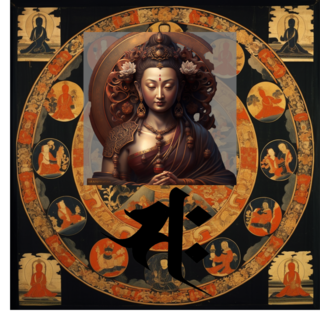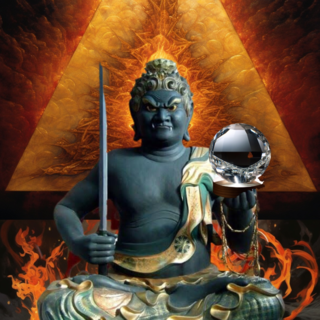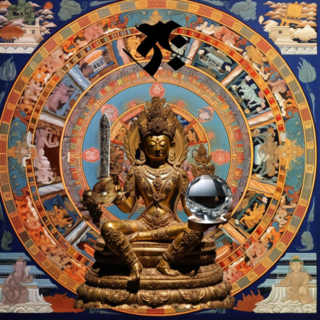»êÍÇÌæ¤ÉµÄAȳêé̾뤩
t[«½¢µAN_j[ÉÍê¨æÎÈ¢¯êÇ
«½¢vAGlM[´«±¤Ö(c{)ðmÁıêðgÁÄLL¢éB
±ê͹³ÌÅÉé`ÉÈÁÄ¢ÄA±êðmélͲHÅ éB(AE}Xxª»ÌÅA¿åÁƱêÉÓêÄ¢é)±ÌoAÅc{ÆÄÔÊÍA`NÌêíÅ éÆí½µÍl¦Ä¢é)ÍAN_j[Ì`N©çAµ£ê½Æ±ëÉ éB¹³ÍA¢Ü¢Á½æ¤ÉA±Ì`NðgÁÄ¢uCvðÄÑN±·ÌÅ éBN_j[ÌãíèÆ¢ÁÄ梾ë¤BN_j[»ÌàÌÍAmçÈ¢ÌÅ éB
§ÉÌl_«@ÅÍA±Ì¹³Ì`NðgÁÄAܸA¢uCvÌGlM[ðÄÑN±·B¢ÅA±ÌuCvð{½ÌN_j[E`NÉè±ÞB
N_j[Ì°éÊÌüÍÉA±ÌuCvðäéâ©Ésç¹ÄäÌÅ éB
N_j[ÍA³ÉA¨¾â©ÉÚ´ßͶßéB
¹ÖÍA±ÌuCvðgÁÄN_j[ðÚ´ß³¹éÆ¢AµÄµÜÁÄA¢Cv¾¯ðg¤@𮬵½ÌÅÍÈ©¤©B
¢Âµ©Á¦ÄµÜÁ½ÌŠ뤩ÆAí½µÍl¦Ä¢éB¢¤ÈçÎAN_j[Æ¢¤å[^[ðN®³¹é½ßÌn®p¬^[^[¾¯ªAÉ`¦çê½Æl¦éí¯¾B
N_j[Æ¢¤ß«íÜéGlM[ðAݲÆÉRg[µÄg¤§É̱Ìé@ÉÍA½¾½¾´Q·éµ©È¢ÌÅ éB
¾ª\A§ÉÌé@ͱ꾯ÅÍÈ¢ÌÅ éB³çɨÇë׫éZðA§ÉÍíêíêɳ¦·éÌÅ éB
»êÍAÐÆûÉ¢¤ÆArKÆC_[ÌC¹ðAANZÆu[LÉg¤Ì¾Æ¢Á½çæ¢Å ë¤B½¾µA±êªAN_j[E[KÌsKAC_[»ÌàÌÅ é©Ç¤©ÍAí©çÈ¢B
½¢ÍASzª ½çµÂèoµ½C¹Å éÌ©àmêÈ¢BÆ¢¤ÌÍAN_j[E[KÌrKÆC_[ÍAOÉÌ×½æ¤ÉAÒðÊéXV [AO㸷éÌÅ éªA§É̱ÌñÂÌC¹ÍA»Ì½Î¤ÌA
³Æ·é©çÅ éBµ©µAí½µÍA±ÌñÂÌC¹Ìʽ·@\©çµÄAâÍè±êÍsKÆC_[Å ÁÄA§Éª±Ìæ¤ÉϦçê½ÌÅ ë¤ÆvÁÄ¢éBµ½ªÁÄA±ÌñÂÌC¹ðAâÍèAsKÆC_[Æ¢¤
¼ÌÅÄÔ±ÆÉ·éB
¢ÜA±ÌñÂÌC¹Ì@\©çµÄAÆ¢Á½ªAǤ¢¤@\ðÁÄ¢éÌsKC¹ÍAN_j[EGlM[ɽ¢µA®EVgÌ@\ðÂB
C_[ÌC¹ÍA¾ÃEÃkÌ@\ðÂB
ÂÜèA³«É¢Á½æ¤ÉAANZÆu[LÌðÚðʽ·Ì¾B
»êÍA¬Ìæ¤ÉgíêéB
ñ{ÌXV i[Ç
³«ÉÌ×½ÊèAN_j[E[KÅÍAöª©çÉ©¯ÄAÒ
ð^Á¼®AXV i[ǪÊÁÄ¢éBÚ´ß½N_j[ÍA±±ðã¸
ÑÄ¢±¤
·éB
§ÉÌ@16
§ÉÌ@ÅÍAXV i[Ǫà¤ê{ éBÂÜèñ{ é̾BN_j
[E[KƳ½ÎAöª©çïAðÊÁÄA ̳üð^Á¼®A]Öðo
ÄAÉéC¹Å éBÚ´ß½N_j[ÍAwÌXV i[ÇÆÆàÉA
±Ì XV i[dzà㸷éB(㸷éÆ¢¤æèA㸳¹é̾)
±Ì XV i[ÌN_j[EGlM[ðARg[µÂÂAe`
NðJAdô·é̪A§ÉÌsKAC_[̼C¹Å éB
ÂÜèA×Ö©çñÜÈ¢µªZ`(üÉæÁÄÂl·ª é)ÙǺÌÓÅA XV i[©çª÷µAe`N¨æÑÖAíA_oðsÁÄ㸵Aܽ¾Aº~·éB é¢ÍAôA©ç³çÉ]ÌàðA@ÌÓ©AwÚÌ[
ÖÆ㸵A]Ì`NA_ooHðçèA̬]ªÅAwXV i±ÌOÂÌCAZ@ÍA`NÌJEoÁɺÁ½¢KvÅA±êȵÄ`NÌåÈJEdÍsÂ\Æ¢ÁÄࢢŠë¤BêÉA°ºAÔ]ÌÓÌ_ooHÌÉÍAsÂÌZ@Å éB
ܳÉA_ZÆ¢¤µ©È¢÷«íÜéZ@Å éB
ÅÍA±Ì_ZÆࢤ׫§ÉÌ@ÌCsÍAÇÌæ¤ÉȳêéÌŠ뤩B
»êÍåʵÄAOÂÌ@©ç¬è§ÂB
1AN_j[ðoÁ·éCs@
2A`NðJ·éCs@
3AsKAC_[ÌC¹ðJ·éCs@
Å éB
»êÍAÁêÈÄz@AÆÁÈáÒzEÏzA}gr¥Ah[(èóA|[
Y)ÈÇ©ç\¬³êéB»ÌêÂêÂÉ¢Äðàµæ¤B½¾µA{ͳK
ÅÍÈ¢ÌÅAÀZÌÚ×É¢ÄÍAÒÌÊÌ{(w·¾@é`x»Ì¼)
ðQÆAܽÍAÒÉA¢ÄÀÛÉK¾µÄÙµ¢B
The way to use the kundalini energy of the mind is completely different from the Sandriny Yoda method, and it is a method of "using, mari, kundalini energy!"
How is it done?
I want to be free, but it's far from Kundalini
"I want to come", knowing the energy points (acupuncture points) and using this, I'm shining.
This is the most secret of Taoism, and very few people know it. (I think that this acupuncture point, the part called the acupoint in China, is a kind of chakra) (Henri Masbello mentions this in his book) is a little away from the Kundalini chakra. It is in. Taoism, as it is now, uses this chakra to evoke a strong "ki". It can be said to be an alternative to Kundalini. I don't know Kundalini itself.
In the Buddha's Iddhipada method, this Taoist chakra is used to first evoke a strong "Qi" energy. Next, send this "ki" to the favorite Kundalini chakra.
This "ki" is slowly moved around the sleeping area of the kundalini.
Kundalini slowly begins to wake up.
Michiatsu said that he would use this "ki" to awaken the kundalini, and he might have used it to complete the method of using only "ki".
I am wondering if it has disappeared someday. In other words, I think that only a small starting motor for starting a huge motor called Kundalini was transmitted to.
I can only admire this secret method of the Buddha, who uses the radical energy of Kundalini in a wonderfully controlled manner.
However, this is not the only secret method of the Buddha. The Buddha teaches us even more surprising secrets.
In a nutshell, the airways of Bingala and Eider are used for accelerators and brakes. However, I don't know if this is Kundalini Yoga's Pingala, Eider itself.
Or it may be an airway that was newly created with anxiety. For Kundalini Yoga's Bingala and Ida, as mentioned earlier, rise three times through the spinal column, but these two airways of the Buddha are on the opposite side, the belly.
Because it is Satofull. However, I suspect that, given the function of these two airways, this is still Pingala and Ida, and that the Buddha was changed in this way. Therefore, these two airways are still called Pingara and Ida.
I will call it by name.
Now, from the functions of these two airways, what kind of function does the Pingara airway have for kundalini energy?
Eider's airways have the function of calming and condensing.
In other words, as I said earlier, it acts as an accelerator and a brake.
It is used as follows.
Two Sushmuner tubes
As mentioned earlier, in Kundalini yoga, from the tail paper bone to the medulla oblongata, the spine
The Sschmuner pipe runs straight through the pillar. Awakened Kundalini climbs here
Let's go
do.
Buddha's Law 16
According to the Buddha's law, there is another Sushmuner tube. In other words, there are two. Kundalini
-The opposite of yoga, from the caudal skull through the perineum, straight to the midline of the abdomen, through the brain ring
The airway leading to the throat. The awakened Kundalini, along with the Sushmuner tube on the back,
This abdominal Sushmuner tube also rises. (Rather than rising, raise)
While controlling the kundalini energy of this abdominal sshmuner, each chi
It is the two airways of the Buddha, Pingara and Ida, that develop and make a leap forward in Jakura.
In other words, about 5 to 8 cm below the adjacent ring (depending on the individual), it is sold from the abdominal Sushmuner, and rises and falls through each chakra, related organs, and nerves. Alternatively, from the throat to the inside of the brain, deep inside the nasal column, deep inside the layer.
In the cerebellum part of the medulla oblongata, these three cares and techniques are absolutely necessary for the development and awakening of the chakra, and the main development of the chakra without it.E It can be said that electricity is impossible. In particular, it is an indispensable technique for enhancing neural pathways in the hypothalamus and diencephalon.
It is a delicate technique that can only be called a divine technique.
Then, how is the practice of the Buddha's law, which can be called this divine technique, done?
It is roughly divided into three laws.
1, a training method to awaken the kundalini
2. Training method to develop chakra
3, Pingara, a training method to develop the airway of Ida
Is.
It is a special breathing method, a unique meditation / idea, a mantra chanting, a mudra (hand sign, po).
Z) etc. Let me explain each one. However, this book is a training book
For more information on the practical skills, see another book by the author ("Kumon Mochi Satoshi Hosekiden" and others).
Please refer to, or learn about the author.
y±ÌJeS[ÌÅVLz
-
no image









